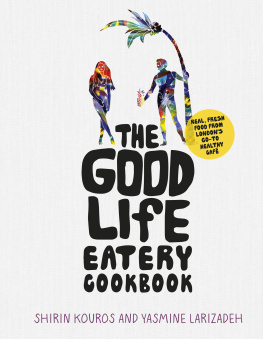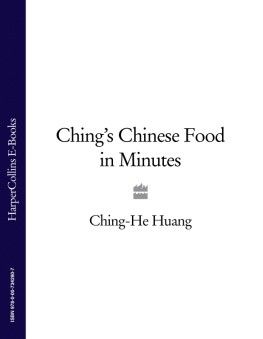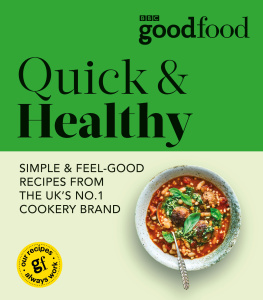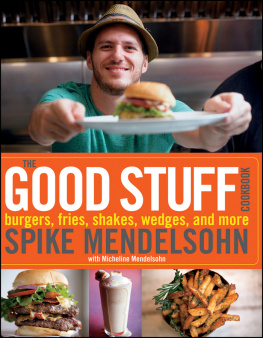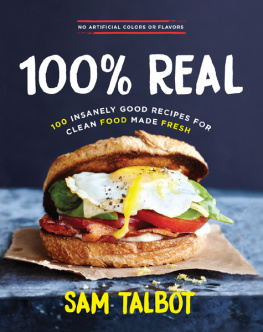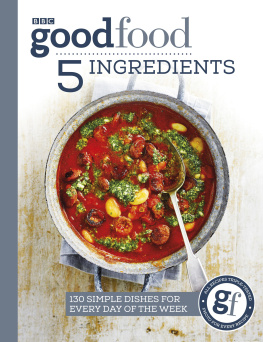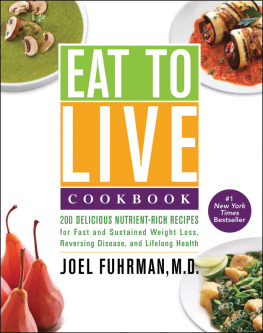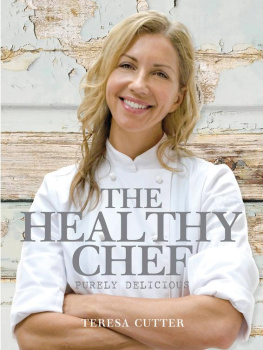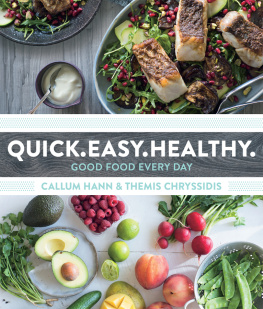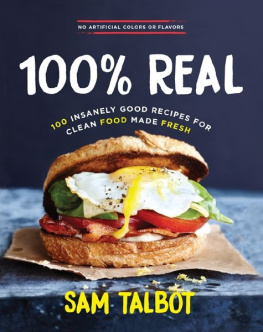CONTENTS
ACKNOWLEDGEMENTS
To our Families, thank you for your unconditional love and support. We wouldnt have been able to do this without you.
To our Team, our gratitude goes beyond anything we could put into words.
And to our other halves, thank you for putting up with us throughout it all.
GLOSSARY
Acai berries/acai pure: The acai berry is a wondrous, reddish-purple, grape-like fruit that comes from the acai palm tree, native to Central and South America. Up until recent years it was a wild harvest, but with its growing popularity farming has started. The acai fruit pulp is considered to be even richer in antioxidants than cranberries, raspberries, blackberries, strawberries or blueberries. Acai berries do not travel well, therefore most of the time you will find it in pill, powder or frozen pulp form. We prefer the frozen pulp as you are also getting more fibre and it tastes DELISH in smoothies!
Agave nectar: The agave plant grows from the southwestern US through to the northern part of South America. It is actually the same plant that is used to make tequila. Agave gained popularity as it is lower on the glycemic index, but just like any natural sweetener, such as maple syrup or honey, it should be used sparingly.
Arrowroot powder: Arrowroot is an easily digested starch extracted from the roots of the arrowroot plant, native to South America. Arrowroot is a root starch that acts as a thickener, similar to cornstarch. Unlike cornstarch, which is a highly processed GMO, arrowroot is extracted in a fairly easy and natural way. It is quite simple to work with; you mix the arrowroot with an equal amount of cold water, and then whisk to a slurry. Add the slurry mixture into your sauce and you will immediately see it thicken up. It is best used at the end of cooking as it can break down in long, high-heat cooking. It has no flavour and it leaves sauces glossy and silky.
Barberries: I love using ingredients that bring me back to my roots, and these little red jewels know as barberries are incredibly useful things to have in the store cupboard sprinkle them onto a dish of rice or couscous or strew over pot-roasted chicken, and theyll bring a burst of gorgeous colour and an explosion of tart flavour. They are often dried, as they dont keep well fresh. Just a random fact, Iranians use barberries as a key ingredient in certain wedding dishes, where their sourness stands as a symbol of the fact that life isnt always a bed of roses! You can find them in most Middle Eastern grocery stores or on Amazon, but make sure they are fresh. They are about half the size of a raisin and more tart than a cranberry. You know they are fresh when they are bright red; if they are brown in colour that means they have oxidised or are old. Make sure to wash and pick through the barberries as you sometimes find stones in the packet.
Bee pollen: Bee pollen is made by hard-working honeybees and is the main food of these bees. Bee pollen is now available commercially as a food supplement, meant to promote vitality. It is a tiny yellow pellet with a sweet flavour typically sprinkled on granola, yogurt, smoothies or porridge.
Buckwheat groats: DONT LET THE NAME DECEIVE YOU! Buckwheat is not wheat, nor is it related to wheat in any way, it is actually derived from the seeds of a flowering plant. Therefore, like quinoa, it is naturally gluten-free. It can be baked into granolas, like our recipe , but buckwheat is also a good binding agent. When soaked, it becomes very gelatinous and can be used in baking.
Cacao nibs: Cacao nibs are simply unprocessed cacao beans broken into little pieces. These little dark nibs are great sprinkled on your morning porridge or smoothie, stirred into any cookies or baked goods and also nice just to munch on alone. They are also rich in magnesium.
Chestnut flour: Chestnut flour is made from finely milled chestnuts. It is a beautiful flour to work with for gluten-free and paleo baking, but as it is quite pricey it also works well when combined with other, cheaper flours. It gives a nutty flavour to baked goods while also providing a great source of protein and fibre.
Chia seeds: These are tiny black seeds, slightly larger and similar in colour to poppy seeds. They come from a plant called Salvia hispanica from the mint family, native to central and southern Mexico and Guatemala. They are known for their ability to provide slow-release energy, and were once a staple food for the Aztecs and Mayans. These tiny seeds are a great way to boost the fibre, protein, calcium, antioxidants and omega-3s in your diet. In order to gain their full benefit, chia seeds should be soaked for about 20 minutes in double the amount of water until they swell and become gelatinous prior to consuming.
Chipotle in adobo sauce: This Mexican favourite really packs a punch. Chipotles are smoked and dried jalapeo peppers. Their flavour really comes out when they are marinated in adobo, a tangy, rich smoky sauce. OOOOO WEEEEE, give me some of that chilli!
Coconut cream: Is essentially coconut milk but much thicker. It is made in the same way as coconut milk, whereby the coconut flesh is grated and soaked in hot water and then drained. The cream is the thick, non-liquid part that seperates from coconut milk and rises to the top. Its great used in desserts and non-dairy mousses/creams.
Coconut flour: Is dried, pulverised, defatted coconut flesh. It is made from the coconut solids that are left over after the meat has been used to produce coconut milk. Coconut flour is not easily substituted for other gluten-free flours in recipes as it absorbs tremendous amounts of liquid.
Coconut oil: We are big fans of coconut oil at The Good Life Eatery. Not only is it full of the best kinds of saturated fat, but also holds up well under the heat of cooking, making it safe to fry and grill with. Coconut oil is the oil derived from the fatty flesh of coconuts. Try to reach for unrefined coconut oil; virgin and extra-virgin are both great, as it means they are made from the first pressings of raw virgin coconuts without any added chemicals.
Coconut, shredded: Is simply shredded and dried coconut flesh. Try to buy one with no added sweeteners or additives.
Dried sour lemons: Also known as Limoo Amani, these dried limes originated in the Persian Gulf and are very popular in Persian cuisine. They are left to dry in the sun to reduce their water content and are therefore dark brown and very hard. They are used whole, sliced or ground to give a tangy, sour and slightly bitter flavour to dishes. Whole dried lemons are often cooked in Iranian stews where they soften up so you can then pierce and eat them. You can find them on Amazon or in most Middle Eastern food shops.
Edamame beans: Edamame is a young soya bean that has been harvested before the beans have had a chance to harden. We mainly see them in their pods in Japanese restaurants, served lightly steamed with a sprinkling of sea salt. You can buy them shelled or in the pod, and usually frozen.
Farro: Farro is the term used for a group of three wheat species. In Italian cuisine, farro is distinguished in different sizes: farro piccolo (also known as einkorn), farro medio (also known as emmer), and farro grande (also known as spelt). The imported Italian farro available in the UK is usually the emmer variety. It is most often semi-pearled, meaning it retains some but not all of its bran and nutrients. This type of farro doesnt require soaking and defies the myth that it takes ages to cook, as it is ready in just 25 minutes.

